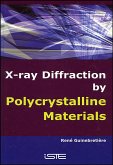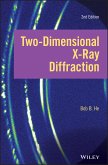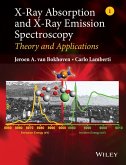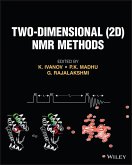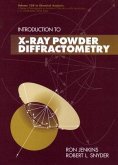An indispensable resource for researchers and students in materials science, chemistry, physics, and pharmaceuticals Written by one of the pioneers of 2D X-Ray Diffraction, this updated and expanded edition of the definitive text in the field provides comprehensive coverage of the fundamentals of that analytical method, as well as state-of-the art experimental methods and applications. Geometry convention, x-ray source and optics, two-dimensional detectors, diffraction data interpretation, and configurations for various applications, such as phase identification, texture, stress, microstructure analysis, crystallinity, thin film analysis, and combinatorial screening are all covered in detail. Numerous experimental examples in materials research, manufacture, and pharmaceuticals are provided throughout. Two-dimensional x-ray diffraction is the ideal, non-destructive analytical method for examining samples of all kinds including metals, polymers, ceramics, semiconductors, thin films, coatings, paints, biomaterials, composites, and more. Two-Dimensional X-Ray Diffraction, Second Edition is an up-to-date resource for understanding how the latest 2D detectors are integrated into diffractometers, how to get the best data using the 2D detector for diffraction, and how to interpret this data. All those desirous of setting up a 2D diffraction in their own laboratories will find the author's coverage of the physical principles, projection geometry, and mathematical derivations extremely helpful. * Features new contents in all chapters with most figures in full color to reveal more details in illustrations and diffraction patterns * Covers the recent advances in detector technology and 2D data collection strategies that have led to dramatic increases in the use of two-dimensional detectors for x-ray diffraction * Provides in-depth coverage of new innovations in x-ray sources, optics, system configurations, applications and data evaluation algorithms * Contains new methods and experimental examples in stress, texture, crystal size, crystal orientation and thin film analysis Two-Dimensional X-Ray Diffraction, Second Edition is an important working resource for industrial and academic researchers and developers in materials science, chemistry, physics, pharmaceuticals, and all those who use x-ray diffraction as a characterization method. Users of all levels, instrument technicians and X-ray laboratory managers, as well as instrument developers, will want to have it on hand.
Dieser Download kann aus rechtlichen Gründen nur mit Rechnungsadresse in A, B, BG, CY, CZ, D, DK, EW, E, FIN, F, GR, HR, H, IRL, I, LT, L, LR, M, NL, PL, P, R, S, SLO, SK ausgeliefert werden.



